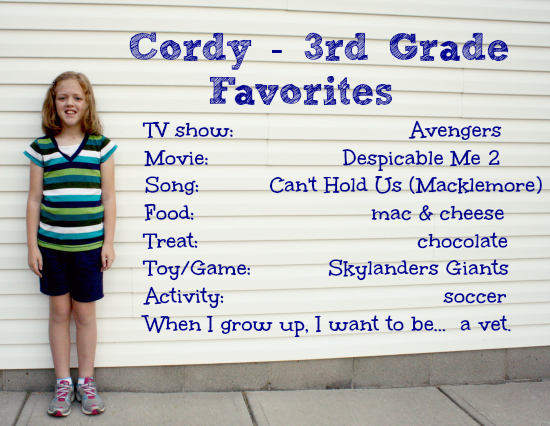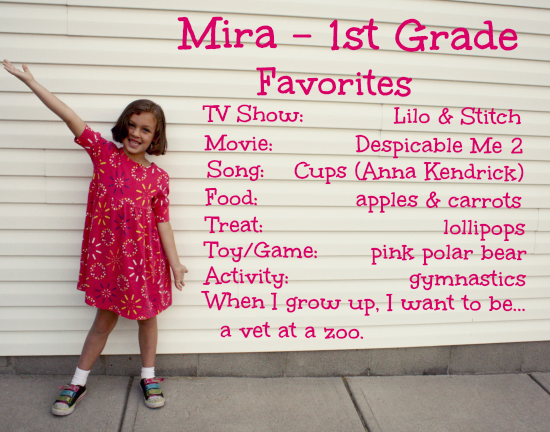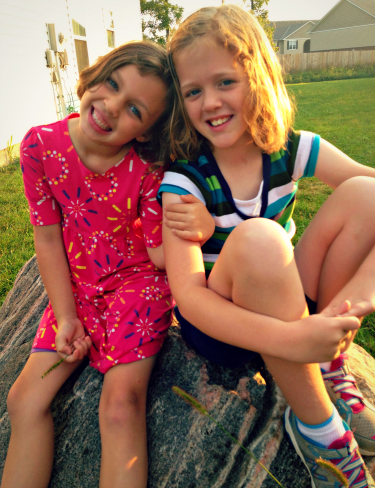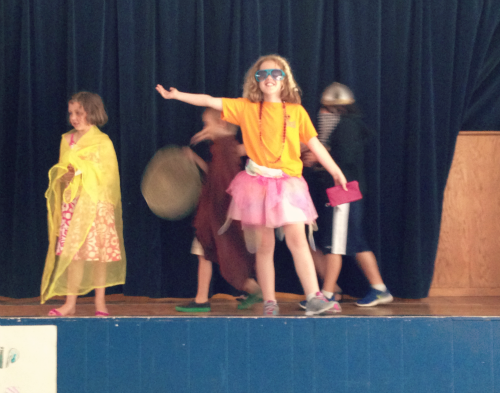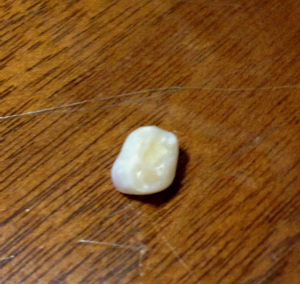Back in June, Cordy had to go through a re-evaluation in order to continue receiving county assistance for her therapy. Basically, they wanted her to be tested again to make sure she still had autism and it wasn’t just a fluke when she was four years old. (Hahahaha…the county has such a sense of humor!)
We received the full report a few weeks ago, and it’s taken some time to read through all 13 pages of descriptions of her behaviors and test scores and what they mean. There’s no doubt she still has autism. Her psychologist said she’d be diagnosed with Asperger’s under the old guidelines, but she’s using the new DSM-V so it now falls under the blanket diagnosis “Autism Spectrum Disorder.”
It didn’t bother me to see that her diagnosis remains. We expected that. Cordy has autism, it’s a part of who she is, and while I’d love for the difficulties caused by autism to go away someday, I know it’s going to stick with her. It’s not something that most kids grow out of. I’ll admit that autism can throw a lot of barriers in the way of everyday life, but it’s also true that Cordy wouldn’t be the same quirky, funny, and smart little girl without it. Really, autism is just a name for the unique way her brain works, both good and bad.
What did trouble me, however, was seeing a high occurrence of symptoms of other co-morbid conditions: ADHD (both types), severe anxiety, obsessive-compulsive disorder, manic behavior and depression. At the moment these are all considered to be related to her autism and not separate issues. I can’t help but think, though, how these issues could eventually wreck havoc on her as she gets older. Puberty is hard for any kid to go through, but when you’re different, it has to be so much harder.
She’s at the age now where she should be making friends and wanting to spend time with those friends. But she doesn’t express any interest in hanging out with kids from school. She can name a few kids who are friendly with her, but I haven’t seen these kids seek her out when we’re at school events. Mira has birthday parties surrounded by friends. Cordy can’t think of anyone to invite for hers. Making friends is not a primary goal of going to school, but I had hoped she would be a little more social than she currently is.
During the evaluation, the psychologist told me about a social skills group she runs just for girls. The girls are roughly 8-12 years old, so having an all-girls group is generally beneficial for this age range when gender-specific friendships begin to strengthen. And when boys are yucky and then start to be seen as dreamy. The girls all have different issues (not all have autism) and as a group they learn how to properly interact with others, make friends, and play together in a way that everyone enjoys. Without hesitation I asked if we could get Cordy into the group. It sounded like a perfect fit for her.
This week was her first social skills group meeting. Cordy wasn’t so thrilled of the idea of more therapy, especially when this therapy doesn’t have the big foam pit like she has at OT. The group meets shortly after school, too, when she’s already tired and cranky, and she protested that having to go to this was taking away valuable reading time from her.
When we opened the door to the waiting area , I found a mostly-full room of people. The moms were sitting in the waiting room chairs, while the kids were doing all sorts of things independently. Some were playing with the large wooden cube toy in the middle of the room, some were on electronic devices, and others were hanging close to their moms. There were several boys in the room, too, but it was obvious they were siblings and weren’t staying.
Cordy immediately saw the cube toy and went to play with it. I quietly took a seat, not interrupting all of the conversations going on in the room. All of the other moms were chatting with each other over what they had been doing on their two week break and the back-to-school routine. One handed out a couple of thank you notes for those who had attended her daughter’s birthday party. They all appeared to know each other fairly well; I felt a little like the outsider in the room as I listened to their conversations and tried to blend in to the chair.
Finally, one turned to me and asked, “Your daughter is new to the group, right? Dr. B mentioned there would be a new girl.”
I nodded, nervous about making the right first impression. “Yes, she is. She had a re-eval with Dr. B this summer. Dr. B recommended more social skills practice and thought she’d be perfect for this group.”
The woman smiled and said, “Well, she’ll love this group. They’re all hot messes!” The other moms in the room laughed and nodded in understanding. A wave of relief passed over me and I instantly felt more relaxed.
Yes, she called our daughters hot messes. But that’s the kind of humor that I’ve seen several special needs moms use to get through each day. Sometimes we need to laugh.
I watched Cordy playing by the other kids. She was talking to herself and not engaged with the other girls who were nearly shoulder-to-shoulder with her. Some of the girls were talking to each other, which gave me hope that one day Cordy would see a room of kids and willingly choose to talk to others and make friends.
Soon Dr. B arrived and called all of the girls back. I was hoping that I could get to know some of the moms while the kids were working in their group, but the room quickly cleared out. Only two other moms remained, and one of the remaining ones got up from my side of the room to sit closer to the other woman and talk. I reached for my trusty awkward situation management tool – my iPhone – and pretended I wasn’t listening intently to their conversation, when I really was.
Thankfully, after about five minutes they began slowly working me into their conversation. It felt great to chat with other special needs moms in person. They understood the challenges I have each day. None of us judge for the strange ways we sometimes have to do things to accommodate our sensitive kids, cause they’re doing the same.
I soon realized that one of them had a daughter so similar to Cordy it was frightening. Both have extreme anxiety, same diagnosis, similar sensory issues – and they’re the same age. I truly enjoyed the conversation. Just as Cordy doesn’t have a lot of friends, I also don’t have a lot of other mom friends living within the city.
When Dr. B released the kids, Cordy came out and immediately told me she had a great time. I asked what they did, and she said they introduced themselves to each other, set ground rules for the group, and then played a game together. Cordy also told me she made a friend in the group – who happened to be the girl who seemed to be so similar to Cordy. Interesting. Of course, she couldn’t tell me the other girl’s name or what is was that she liked about her, but hey, it’s a start.
I’ve got my fingers crossed that this group will be fantastic for Cordy, and maybe even me, too. I’m hoping she’ll learn how to play within a group and not get upset if things don’t go her way. It would be amazing if Cordy could have friends that she wanted to see outside of when they happened to be right next to her. And I’m hoping to learn better ways to support her through this, and maybe pick up some new wisdom from the other moms.
Hopeful. Ever hopeful.
I’m grateful that we stumbled into this group. I don’t want to change my daughter into someone else, but instead give her the tools to better interact with this world around her, a world which she won’t ever be able to fully escape. With the right tools and support, this kid will do great things.
